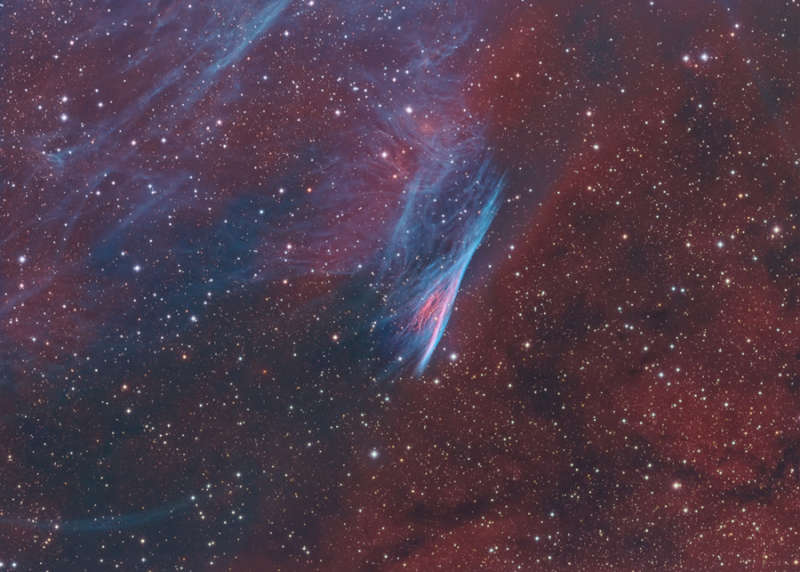
|
Credit & Copyright: Martin Pugh
Explanation:
Moving left to right near the center of this beautifully
detailed color composite, the thin, bright, braided filaments
are actually long ripples in a sheet of glowing gas seen almost edge on.
The interstellar shock wave
plows through space at over 500,000 kilometers per hour.
Cataloged
as NGC 2736, its elongated appearance
suggests its popular name,
the Pencil Nebula.
The Pencil Nebula is about 5 light-years long and 800 light-years away,
but represents only a small part of the
Vela
supernova remnant.
The Vela remnant itself
is around 100 light-years in diameter, the expanding
debris
cloud of a star that was seen to explode about 11,000 years ago.
Initially, the shock wave was moving at millions of kilometers
per hour but has slowed considerably, sweeping up
surrounding interstellar material.
In the narrowband, wide field image, red and blue-green colors track the
characteristic glow of
ionized hydrogen and
oxygen atoms.
|
January February March April May June July August September October November December |
| ||||||||||||||||||||||||||||||||||||||||||||||||
NASA Web Site Statements, Warnings, and Disclaimers
NASA Official: Jay Norris. Specific rights apply.
A service of: LHEA at NASA / GSFC
& Michigan Tech. U.
Based on Astronomy Picture
Of the Day
